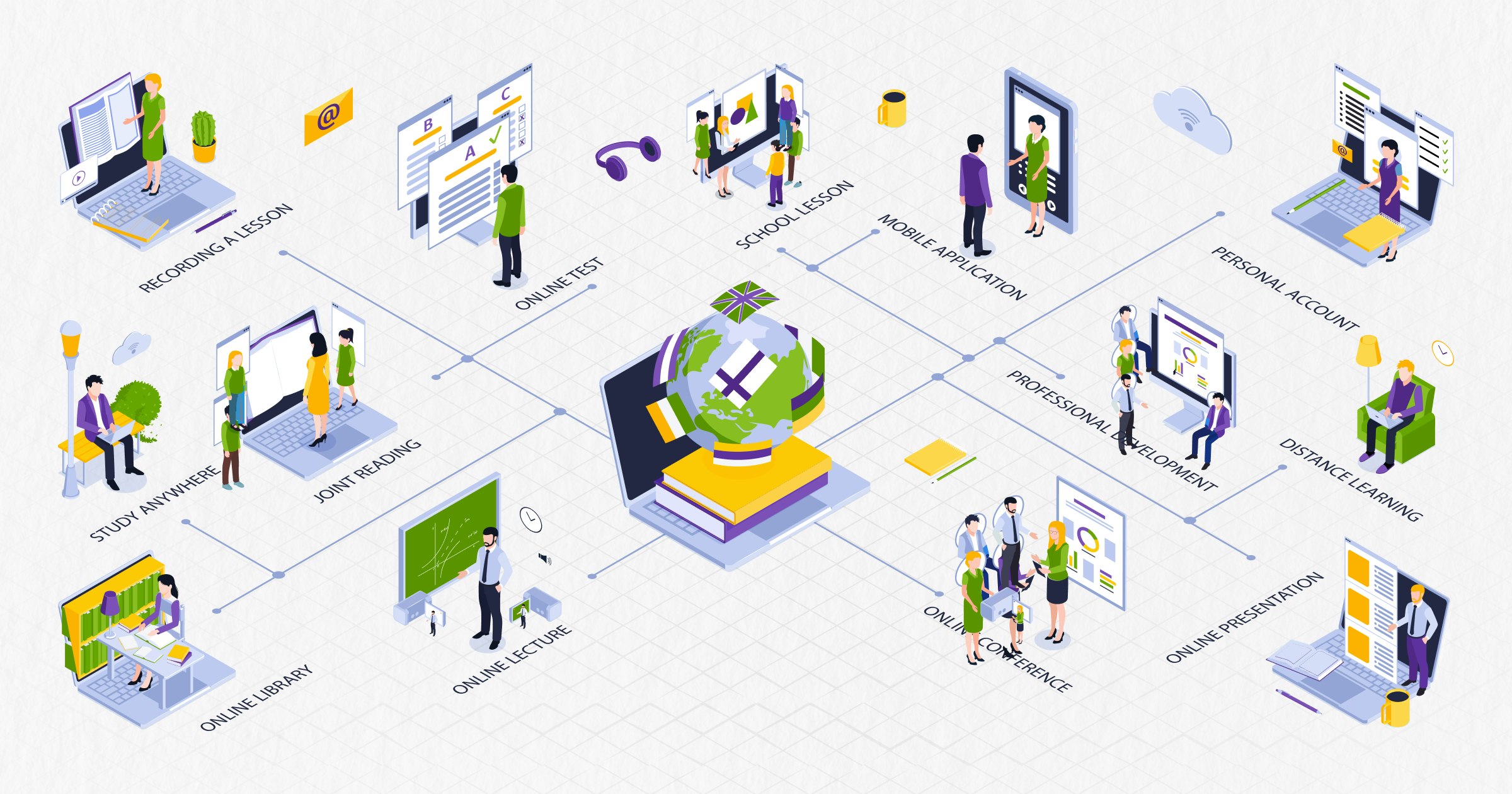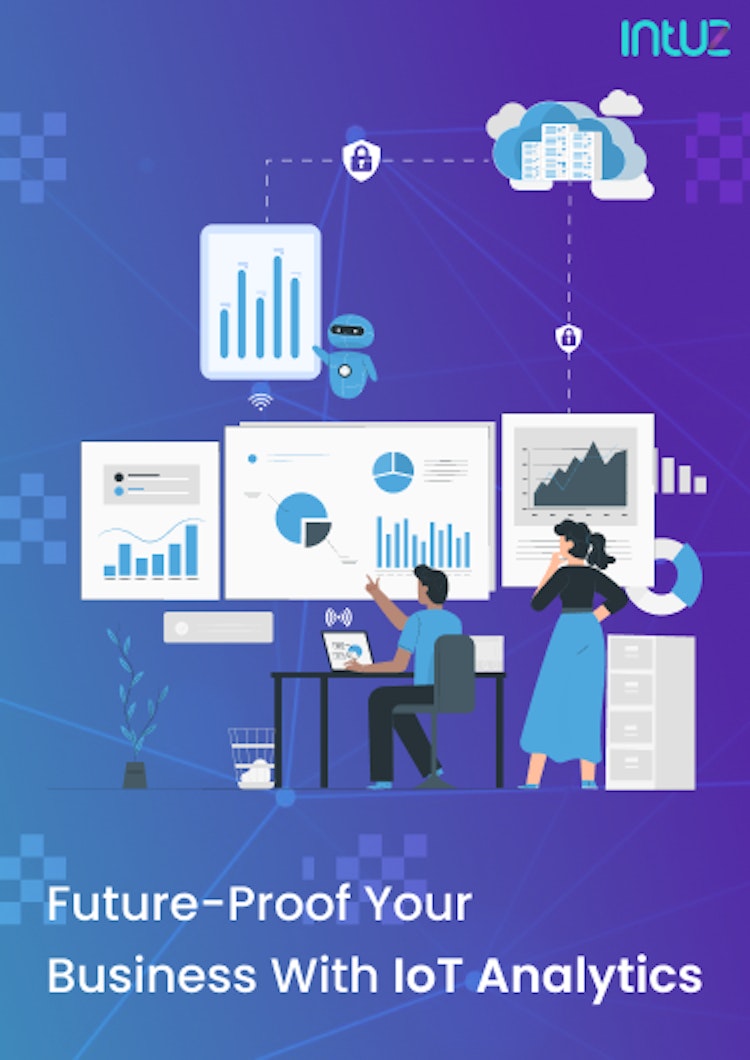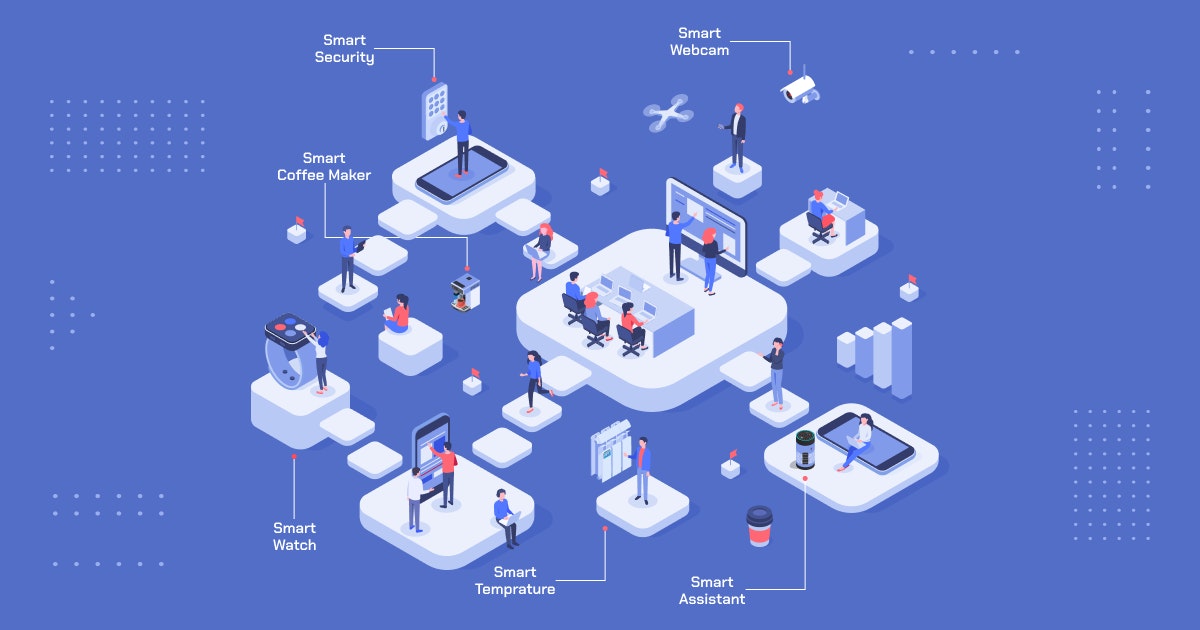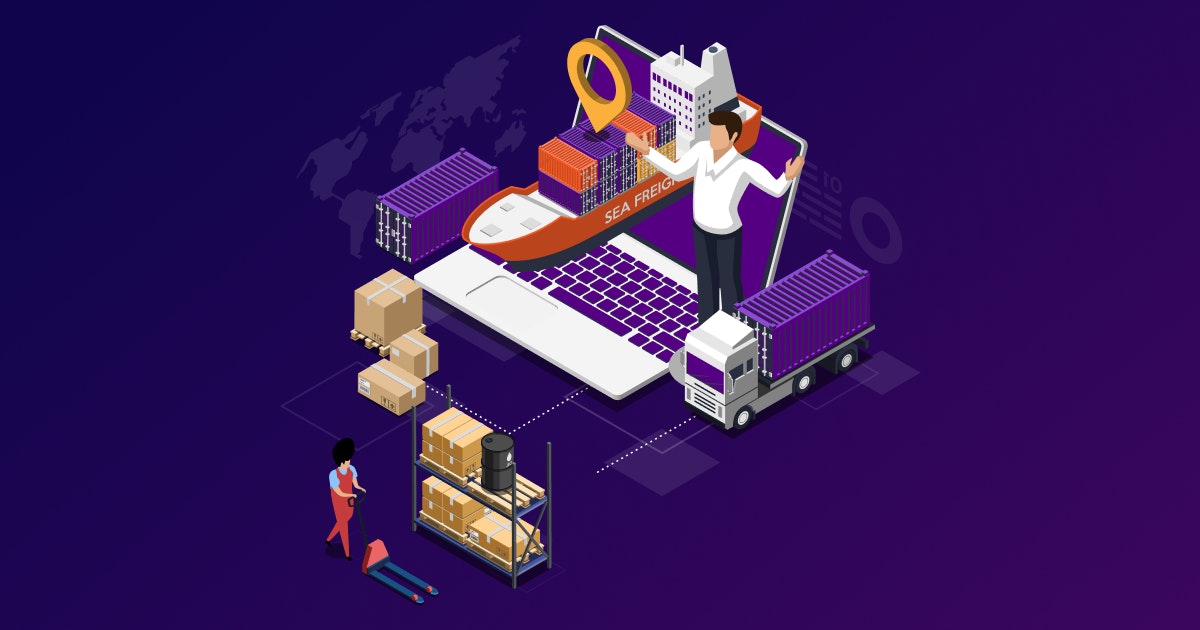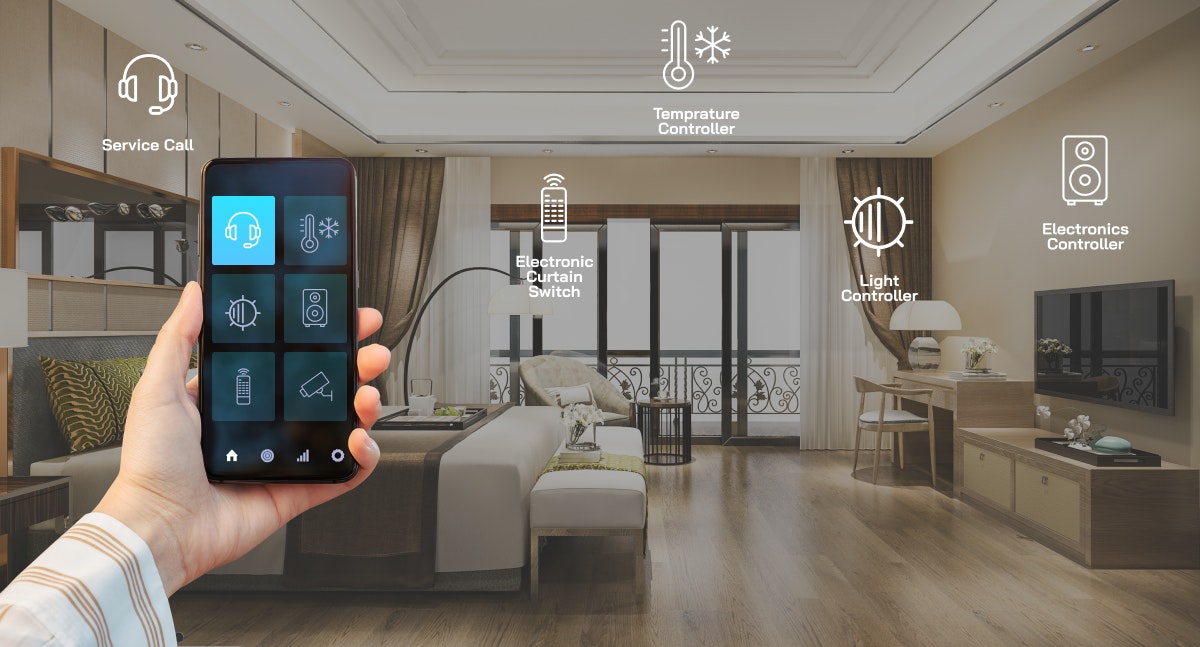Table of Content
Do you remember when you were in school, and you would flip through the pages of a textbook, write on paper with a pen or pencil, and carry all your reading material in a bag that was often too heavy for your fragile shoulders? Well, things are slowly changing and how.
Just like everything else in our lives, education is also transforming digitally. IoT, particularly, has been a boon for this vertical. From “flipped classrooms” to integrated mobile learning - we have come a long way from the traditional way of teaching (and learning).
IoT-powered devices are fast replacing pencils, chalkboards, and paper and revolutionizing instructional approaches with panache! Educational institutions followed traditional teaching methods until recent years, when they embraced technology.
Industry leaders realized it could be the most significant contributor to enhancing learning results. From flipped classrooms and SMART boards with AR and VR capabilities to access to secure learning environments, IoT has attracted eager adopters in the education sector.
Schools and colleges worldwide had to stop offering in-person instruction during the pandemic to curb the spread of Novel Coronavirus. Teachers and students were caught in the middle of the academic year and were forced to continue business as usual in crisis mode.
The entire education system relied on remote learning. IoT played a significant role in helping both teachers and students transition to structured remote learning. However, there is still more ground to cover through e-learning. Fortunately, IoT can help narrow the gaps and even lay the foundation for several new companies focused on digital education.
IoT in the education industry: A new era
The role of IoT in education has to be studied as it is a game-changer as many educational institutions utilize connected smart devices to supplement the already present e-learning and SMART board infrastructure.
IoT in this sector is expected to grow at a CAGR of 14.22%, from $6.01 billion in 2021 to $17.42 billion in 2028. That is a giant leap - if you ask us - almost 3X more! A few reasons for this surreal adoption are as follows:
IoT-enabled gadgets are becoming increasingly popular, and a big part of that is due to the device's simplicity and reduced costs of cloud services.
Thanks to unlimited storage capacities and pay-as-you-go facilities, data access, analysis, and storage have never been more convenient or affordable.
It is possible to rapidly create highly specialized apps to meet the needs of educational institutions.
IoT has the power to simplify life for all stakeholders, including teachers, administrators, parents, and students. With the same effort, resources can be utilized to produce better results. IoT use cases cover almost every facet of the education sector, as these solutions:
Manage applications to maximize cost and viability
Enable classroom management to enhance learning
Make academics engaging by enhancing stakeholder connection
The emergence and use of IoT in the education sector have entirely changed how learning is approached. The technology decreases idle time while maximizing operational effectiveness and efficiency.
IoT connects many devices to the internet, enabling data sharing and processing rather conveniently. A single touch transmits information at high speed without needing human intervention. As a result, IoT in the education sector helps prepare an automated learning environment.
Let's Implement IoT in Your School or University!
Contact UsPopular applications of IoT in education
So you see - IoT in schools means a better-connected future for education. Students can optimally access communication channels and reading materials. On the other hand, teachers can easily measure how well their students are progressing with targeted technologies in real time and help them accordingly.
IoT enables teachers to impart knowledge and students to consume information in a much more productive manner. This technology makes it easier to build learning communities and a culture of professionalism in schools. Let us take a look at the widespread use cases of IoT in this vertical:
1. SMART boards
Traditional textbooks and blackboards sometimes become confusing for students. Replacing these SMART boards in education has made learning and information exchange easy, fascinating, and participatory.
SMART boards are simply white interactive boards that project graphics, words, and illustrations for an enhanced learning experience. A teacher can teach better with SMART boards and clarify difficult or tedious concepts through infographics, instructional films, and virtual representation.
They can easily explain complicated formulas for subjects such as science and mathematics, and they can resolve queries from students in a shorter amount of time.
2. IoT-based attendance systems
Each educational institution has its own set of regulations regarding attendance. Some even specify the attendance percentage required by students to be eligible for exams.
Through IoT, the school management can obtain precise attendance statistics. The technology ensures the information is error-free. Additionally, it can be used for real-time location tracking of students living in hostels.
Smart education helps in maintaining student safety and higher quality of life. Calculating student attendance and fetching data on regularity, punctuality, and personality are mundane tasks made possible by IoT-based attendance systems.
The amount of time saved on acquiring this info will significantly impact costs and employee productivity at the institute. Additionally, the digital record of each student's attendance encourages them to attend lessons more frequently.
3. IoT sensors
Wi-Fi-enabled clocks, hearing-impaired alerts, emergency signs, and audio boosters are tangible security measures found at any educational institution. Adding to that, IoT sensors ensure safety from fire, short circuits, and other accidents by instantly identifying them and raising the alarm to rectify the situation rapidly.
Real-time alerts get generated automatically and delivered to students in case of an emergency. For instance, if some student or staff gets locked in the elevator, a notification can be sent to the concerned person to take action.
At the same time, the victim can be pacified through notifications. The likelihood of earthquakes and abrupt, deadly weather shifts have increased because of climate change and global warming.
Therefore, schools and other educational establishments must be equipped with IoT sensors and meters to inform them about potential disasters. Depending upon alerts, the management can choose to end the day early or declare a holiday in case of a threat.
4. IoT-powered screen readers
The ability of children with disabilities to study and think critically is highly challenging. With the advancement of technology, it is now possible for them to learn new topics and function at par with non-disabled students.
For instance, students suffering from hearing impairments interpret sign language in vocal conversation, but not all institutions have experts who can resolve their queries. IoT allows such students to access an interconnected glove system and a tablet. It excels at turning spoken words into written text.
IoT devices are making the world of education brighter by providing educational help to disadvantaged youngsters. They can tap into their potential and take on profitable endeavors with little hassle.
5. Tablets and mobile applications
Millennial and Gen-Z pupils are massively exposed to technology, which has its own side effects. But regretfully, these contemporary students tend to live through their cell phones, tablets, and other screen-oriented technologies. It is a way of life for them.
The excessive emphasis on gaming and social networking channels has been skillfully moved to instructional subjects by IoT-equipped devices and systems.
Connecting with students and teachers worldwide who share similar interests and aspirations is simple. For example, the data collected by the sensors used in the IoT devices automatically recommend games and events related to the academic subjects of the pupils using the gadget.
With education-based gaming, using smartphones and tablets has almost instantly become advantageous for students as it helps them improve their grades.
Problems IoT in education has the potential to solve
Research shows that 47% of American parents are dissatisfied with the quality of K-12 education their children are receiving. On the other hand, children also know they could do better; their schools can do better. How would you feel if you felt bored in school all the time or if you were under constant stress to perform well? IoT promises to weed out the common problems schools face to a great extent. Let us have a look:
1. Outdated curriculum
Despite the fantastic tech advancements, many schools use outdated teaching practices, curriculums, and paper textbooks simply because the arrangement is familiar and does not cost a dime! There is little scope for embracing new materials and skills that can benefit students and give schools a competitive edge.
2. Standardized testing
No student is alike. While some perform better through traditional learning better, others may prefer watching videos to understand a concept or remember facts. Unfortunately, schools still follow a standard format of testing - which may be unfair to most students.
Standardized exams do not promote creativity and encourage students and teachers to stick to tried-and-true patterns, which would not deliver excellent results in the long run.
3. Low classroom engagement
The conventional form of teaching is about “lectures, discussions, and standardized testing.” To be honest - it is not an ideal situation for teachers and definitely not fair to students. It is possible that slow-learning students may start losing focus and get bored easily because of unstimulating concepts, with academically-inclined ones not showing any interest either.
4. Poorly educated and trained teachers
Believe it or not - teachers play a huge role in defining the students’ social status and lifetime achievements. Students stuck with ill-trained or poorly educated teachers have lower odds of entering brilliant colleges and bagging high-paying jobs. If teachers have the tools and materials to better themselves, their knowledge will ultimately trickle down to how they teach students.
Benefits of using IoT devices and gadgets in education
The deployment of IoT technology in education gives teachers all the necessary tools to optimize classwork, boost the learning capability of their students, connect better with their peers and students, and keep track of crucial resources.
It also gives them a fair chance to hone their teaching skills and connect with each student individually and help them be better at learning. So, what happens on merging IoT and education as a unifocal framework? Here are the benefits of IoT in education:
1. Improved management
A lot of documentation is required to run a school, handle supplies, and allocate cash. Schools are establishing the groundwork for a quicker, risk-free, and connected decision-making framework by putting IoT solutions into practice. It involves all stakeholders, including teachers, students, parents, and government officials, in enhancing the school's functioning.
2. Real-time data collection
IoT enables schools and colleges to handle terabytes of data simultaneously. It creates various opportunities, such as measuring safety, observing student progress, and managing teacher professional development.
Educational institutions may also use real-time data to increase testing and grading effectiveness or identify strategies to increase student participation in the classroom.
3. On-the-go learning
IoT's worldwide reach enables education professionals to establish global teaching standards and guarantee the same caliber of instruction at universities and colleges everywhere.
Educators from all over the world can easily share advice and best practices using peer-to-peer training technologies powered by IoT technology. On the other hand, students can exchange educational resources across geographies, enhancing access to quality learning.
4. Digital organizational processes
loT apps can be used to automate many organizational processes, including conducting lectures. Schools and colleges across the globe can share a standard curriculum and teaching methodologies.
IoT enables the implementation of student cloud logs, attendance tracking methods, smart microphones to enhance lesson delivery, and automatic test-checking capabilities.
Educational institutions maintain student and teacher records along with funding details. Student and teacher documentation is now handled digitally. The arrangement saves substantial time and costs in manually handling such routine yet mandatory processes.
5. Remote education
The COVID-19 pandemic is not wholly over, and nobody can predict when we might once again be required to revert to the social distancing norms to keep ourselves safe. It is a scary thought and let us hope it does not happen again.
Therefore, webinar-style lessons, online learning sessions, and specialized software to work on educational materials support remote education come in handy. loT solutions in educational settings enable lecturers to manage the class using speech or gesture commands remotely.
With this technology, they are better armed to carry out the curriculum for the year as planned, quite comfortably and without any hindrance.
6. Smart or connected classrooms
Smart classrooms create a coherent system that recognizes students, marks their attendance, records their progress, and displays lessons relevant to them. These classrooms also have SMART boards that make lessons interactive and easier to comprehend.
The educational establishments can enable the learning systems in a smart classroom with AR/VR capabilities to show enlightening and entertaining videos on the subjects being covered. For an engaging learning experience, students can use VR headsets.
IoT devices link students and teachers using the technology, creating a perfectly connected classroom. The teacher can automatically load tasks and projects for pupils to complete on their devices as a lesson progresses.
IoT systems can even track the lesson and upload the related tasks whenever the teacher mentions words, such as "assignment," "homework," or "project."
The impact of IoT on the education industry
According to an eMarketer report, 83.2% of all young people aged 12 to 17 are smartphone owners. In addition, 31% of parents said that their children had smartphones between the ages of 6 and 10, while for ages 11 and 13, it was 73% of parents.
These numbers prove that there is much scope for accelerating technology adoption in the education industry. As kids are already tech-savvy, IoT will fundamentally alter their learning by offering more flexibility and aiding automation.
The impact can be noticed as follows:
- Access to necessary information at all times allows students to study at their pace and convenience. This way, they can experience a comparable educational environment at home and in the classroom.
- Schools will benefit from lower running costs and improved energy efficiency with the help of IoT.
- Schools can increase campus security, monitor valuable resources, and improve information access in a typical classroom environment.
- Professors can concentrate on custom, hands-on instruction that students value the most.
- Note-taking, schedule checking, and research tasks can be automated using mobile IoT devices.
- IoT enhances the instructors' ability to teach effectively. Due to the growth of connected technology, instructors are no longer required to hand-grade examinations on paper or spend hours on other standard activities.
- Purchasing reusable equipment such as laptops, tablets, and smartphones will reduce paper costs. Paper is a significant component of the budget for most schools, but reusable technology would eliminate that expense.
- Universities can monitor their students, staff, resources, and equipment with IoT-connected devices at a lower operational expense, which is cost-effective in the long run.
Successfully implementing IoT in education
IoT has the potential to have a significant impact on education. The following three crucial elements will determine how well IoT is implemented in an educational establishment:
1. Safety:
Security of private and public data is a must.
- Given children are involved, especially in a K–12 school setup and even beyond, protecting stakeholder privacy and the data obtained from parents is crucial.
- Besides security assurance from IoT service providers, parents, schools, and universities must also follow effective data privacy measures.
Integrity:
Data integrity is another crucial aspect of IoT.
- Appropriate technology must be used to ensure the accuracy of data being gathered from various sources.
- An open data-sharing platform must be available for all stakeholders concerned without requiring additional investments.
Educational regulations:
IoT in education represents a structural shift in how learning occurs and is imparted.
- The relevant authorities must make and implement policy decisions for any transformative change to be successful.
- Education policy must support the use of technology in classrooms and other learning contexts to strengthen the case for deploying IoT in educational institutions.
Create a Connected Campus: Let's Discuss Your IoT Needs!
Contact UsOver to you
One thing is clear: IoT can enhance education while improving teaching standards and learning capabilities. It offers teachers and students the much-needed technical assistance to tap into their full potential.
IoT solutions will continue to raise educational standards worldwide. Even students with disabilities will have access to the same opportunities as those in good health.
There is a definite prospect for simplifying complicated formulas, concepts, and theories through easily consumable learning materials. The IoT gadgets balance contemporary schooling in ways that benefit the entire global community.
So what are you for? Unlock the full potential of IoT technology and utilize data to drive success in the education sector.
Book a Free 45-minute Consultation with Our IoT Experts Today! Get a customized roadmap and strategies to leverage IoT for your education institutes.
